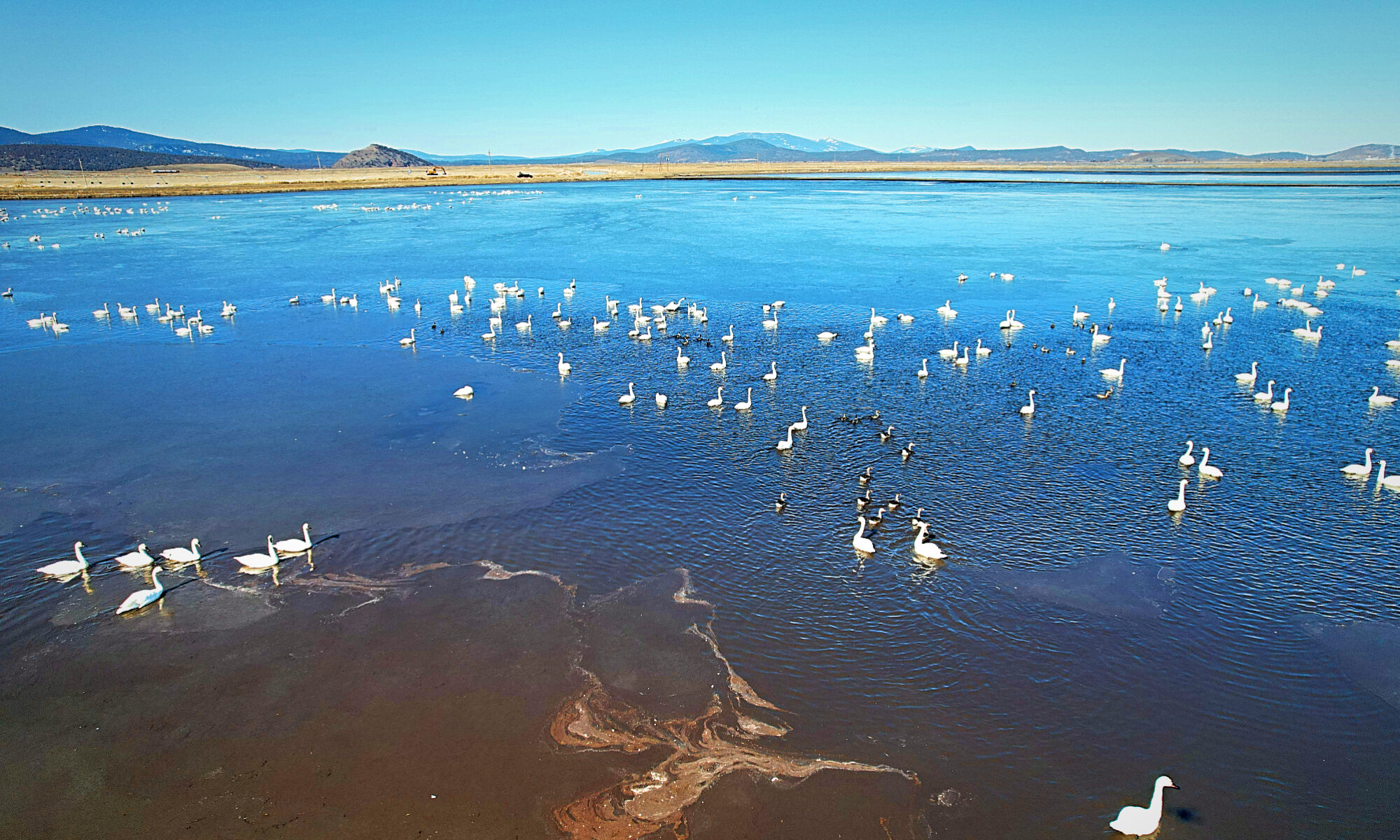REAL Oregon hosts panel about Klamath Basin Water
Members of REAL Oregon’s Class 8 learned about Klamath Basin water issues from stakeholders from throughout the watershed
On a blustery November evening, Class 8 of REAL Oregon got a firsthand look of the challenges of Klamath Basin water issues.
Following a day of touring the Klamath Basin that included stops at the former J.C. Boyle dam site and Spencer Creek with Klamath Water Users Association’s Director of Water Policy, Moss Driscoll, the bus rolled into the Merrill Civic Center for a panel discussion titled, “Dam! Now What?”
The eight-person panel was filled by representatives for economic, Tribal, agricultural, and governmental interests in the ongoing Klamath Basin water discussions. Sitting on the panel were:
-
- Darren Rutledge, Executive Director, The Klamath Idea
- Becky Hyde, Upper Klamath Basin Ag Collaborative
- Ken Griggs, Acting Refuge Manager, US Fish & Wildlife Service Klamath Refuge Complex
- Willie Ray, Jr., Chairman of the Klamath Tribes
- Jonathan Teichert, City Manager, City of Klamath Falls
- Dave Hensley, Klamath County Board of Commissioners
- Frankie Myers, Vice Chairman, Yurok Tribe
- Tracey Liskey, KWUA President and Klamath Drainage District board member

After audience and panel introductions, discussion moderator Scott White, KDD general manager and member of REAL Oregon’s Pioneer Class, jumped into the conversations.
With the recent completion of Klamath River dam removal, White focused the discourse on the history of the Klamath dams and the panelists’ thoughts about them, what dam removal means to the stakeholders and their groups, and what they foresee with salmon returning to the Upper Klamath Basin.

As expected, the conversation was lively and passionate, though friendly.
Panelists shared their frustrations about the dam removal process, as well as their hopes for their communities now that the structures were out. One point of consensus was the fact that with the dams are out and the salmon are coming, the focus needs to shift rebuilding trust and working together on restoration efforts in the entire Klamath River watershed.
At the end of the panelist conversation, the REAL Oregon audience had time for a brief question and answer session. Like the panel discussion, the responses to Class 8’s questions highlighted the complexity of Klamath Basin water issues as well as the need for cooperation.

What is REAL Oregon?
Standing for Resource Education and Agricultural Leadership, REAL Oregon is a program operated by the Oregon Agricultural Education Foundation (OAEF) through the Oregon Farm Bureau.
With a focus on Oregon agriculture, the REAL Oregon program “is a leadership enhancement and development program designed for farming, ranching, forestry, and commercial fishing professionals, producers, affiliated industries, association staff, public agency personnel, and members of resource related boards, commissions, and associations”.
Each Class starts in November and runs through March, with class members attending a monthly session in a different part of the state. While the sessions focus on training Oregon’s future ag leaders about working with government, dealing with the media, and skills that are useful in the boardroom, the program also delves into subjects specific to Oregon agriculture, such as November’s topic, “Klamath Water Project”.
Class 1, also known as the Pioneer Class, graduated in March of 2017. Since then, REAL Oregon has educated over 130 alumni.
“Frankly, it is an honor and a privilege to be an alumnus of the pioneer class and accompanied by such prestigious leaders,” said White. “We still attract the finest talent in the state. I think that says a lot about this program”.
To learn more about REAL Oregon and Class 8, visit https://realoregon.net/.











